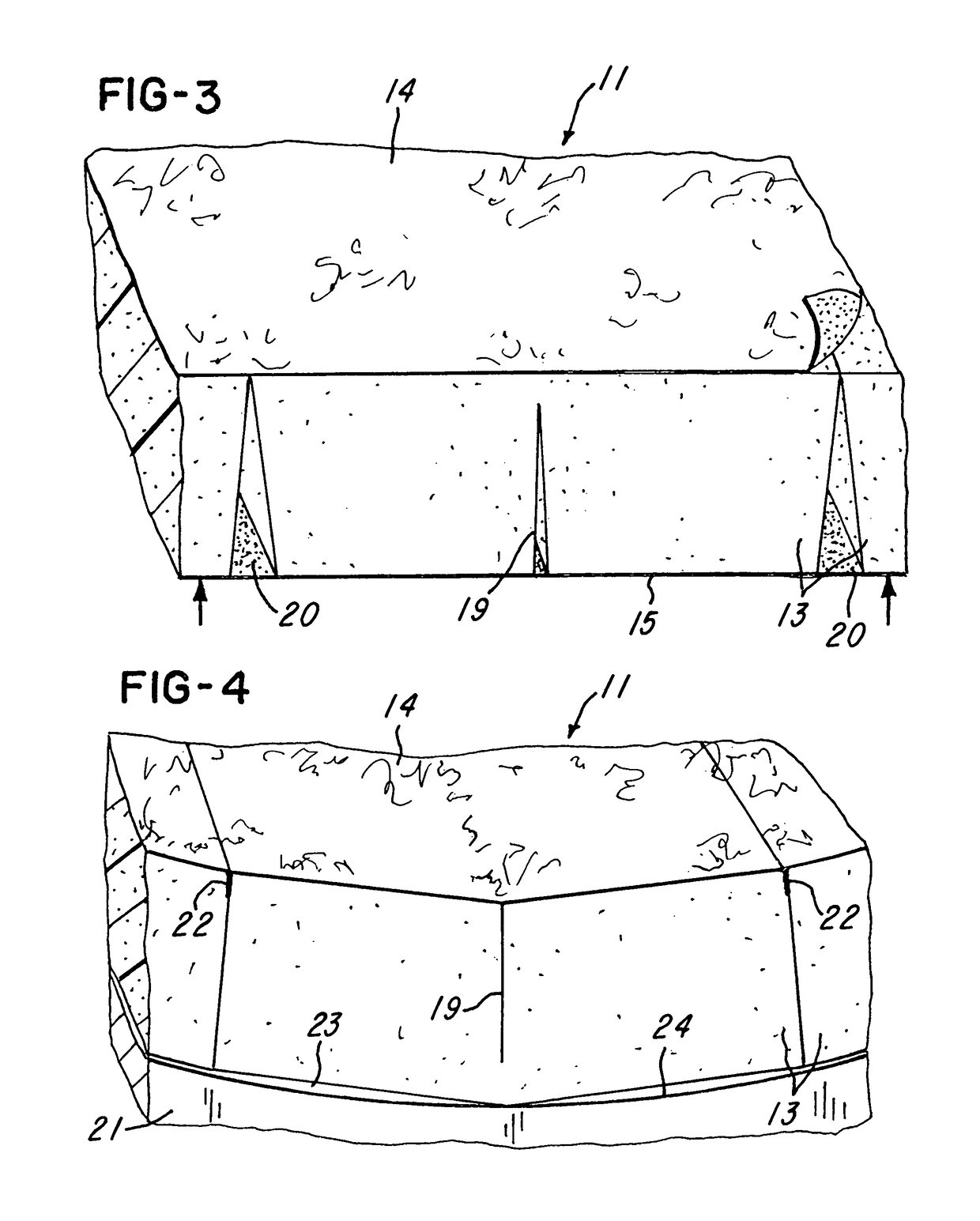Composite cores and panels
a core and sandwich technology, applied in the direction of liquid fuel engine components, non-positive displacement fluid engines, wind energy generation, etc., can solve the problems of reducing the use of resin
- Summary
- Abstract
- Description
- Claims
- Application Information
AI Technical Summary
Benefits of technology
Problems solved by technology
Method used
Image
Examples
Embodiment Construction
[0029]Referring to FIG. 1, sandwich panel 10 comprises core panel 11 and sandwich panel skins 12. Core panel 11 comprises a plurality of pieces or longitudinal strips 13 adhesively attached to overlying continuous mats or veils 14 and 15 (FIG. 2). Adhesive 16 may be pre-applied to veils 14 and 15 or to strips 13, or it may be provided as a separate sheet material, for example a web-type hot melt adhesive or a hot melt scrim. Strips 13 comprise low density cellular material, for example plastics foam or balsa wood. Veil 14 comprises a flexible sheet of porous fibrous material, for example, glass fiber non-woven veil manufactured by Johns Manville Company.
[0030]The veil 14 is sufficiently flexible to buckle and fold into longitudinal spaces between foam strips 13 when the veil 14 is subjected to compressive forces in the plane of the veil and perpendicular to the strips. Alternately, veil 14 may comprise other adhesively attached materials, for example, nonwoven polyester, open mesh o...
PUM
| Property | Measurement | Unit |
|---|---|---|
| density | aaaaa | aaaaa |
| flexible | aaaaa | aaaaa |
| thickness | aaaaa | aaaaa |
Abstract
Description
Claims
Application Information
 Login to View More
Login to View More - R&D
- Intellectual Property
- Life Sciences
- Materials
- Tech Scout
- Unparalleled Data Quality
- Higher Quality Content
- 60% Fewer Hallucinations
Browse by: Latest US Patents, China's latest patents, Technical Efficacy Thesaurus, Application Domain, Technology Topic, Popular Technical Reports.
© 2025 PatSnap. All rights reserved.Legal|Privacy policy|Modern Slavery Act Transparency Statement|Sitemap|About US| Contact US: help@patsnap.com



